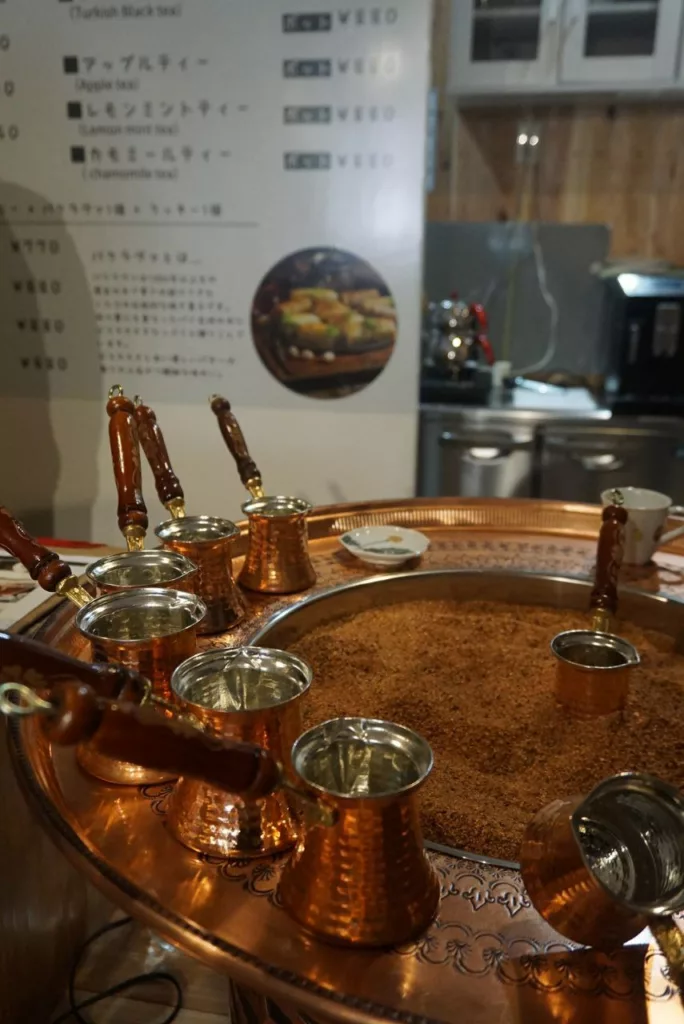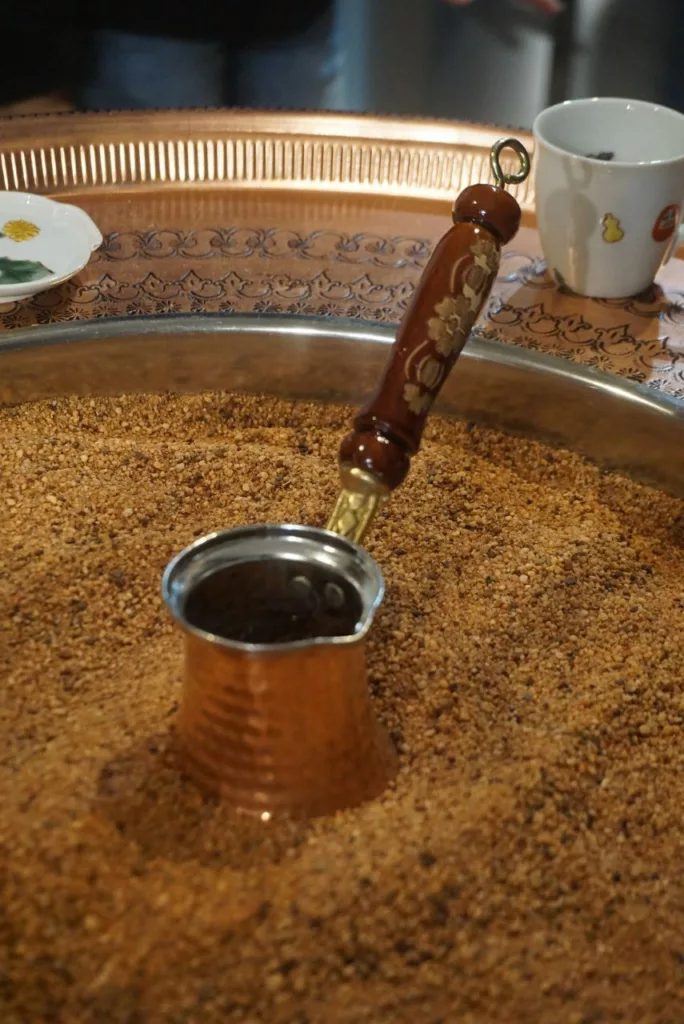Cezve, Fine Grinds, and Aromatic Spices Come Together in Turkish Coffee

“How would you like your coffee?” Coffee connects people from various backgrounds, a universal language that transcends barriers. However, in some countries, coffee is an iconic symbol, brewed in unique ways. In Turkey, coffee is brewed using a special technique called ibrik or cezve, which offers a different result from your typical cup of joe. In this installment of EnVi Eatery, EnVi chatted with Nisan Agca, 2019 Barista Champion of Turkey, on the topic of Turkish coffee, their cezve method, and the symbol of hospitality.
Tracing the History
The origin of Turkish coffee dates back to the Ottoman empire, where coffee was introduced by merchants travelling from Yemen. The hajis had been exposed to coffee during their months-long pilgrimage to Mecca, and it’s possible that they had even brought some with them when they returned. Coffee was bound to make its way to Istanbul after Egypt and Yemen were brought under Ottoman control in 1517. Coffee was then produced and consumed exclusively within the boundaries of the Ottoman empire. “Egypt sent ground coffee as a gift and then [Turkish people] started to boil [it] in containers called cezve, which they turned out to love. Since the Ottoman empire is Muslim, there was no beer or wine like in Europe,” Nisan explained.
The Iconic Cezve
Turkish coffee is brewed in a special pot called a cezve, whose design hasn’t changed much over the centuries. Its wide base makes for easier, slow simmering, which is necessary for this brew, and its narrow neck and spout allow for precise pouring. The coffee is, then, served in small cups which come with a glass of water and a sweet snack.


The uniqueness also comes from the hot sand, which is used to brew the coffee. Although this is not the most traditional way (brewed directly on a stove is way more traditional), this sand-heating method gives more even heat distribution and more control over the heat, which can enhance the experience of drinking coffee. While heating up, the pot is also slowly dragged across the sand, which adds warmth to the coffee.
The Bold Taste
Turkish coffee is well known for having a strong, fragrant flavor. The coffee is thickened by being unfiltered, giving it a distinct texture from espresso and causing the dark roast coffee grinds to sink to the bottom of the cup, which makes the taste stronger. Espresso and Turkish coffee have similarities due to the fact they’re just coffee and water, but the latter differs in texture and sometimes, additional spice. Turkish coffee is occasionally mixed with flavorful spices like cardamom. In addition, the beans are powdered to a fine texture.

The sweetness level of the coffee, which is frequently characterized as robust and bold, can also be affected by the addition of sugar during brewing. Usually, there are a few kinds of snacks acting as company while drinking coffee. “Back in the palace days, there was a ceremony. Turkish coffee, water, sherbet and Turkish delight are the four, big elements in the ceremony,” Nisan explained. Nowadays, the snacks have expanded more to cookies, chocolates, and raisins.
Conversations and Coffee Houses
“You should talk to each other if you are drinking Turkish coffee,” Nisan said. A symbol of hospitality in Turkey, this coffee is frequently served at social gatherings and is considered an essential social etiquette. It’s also a way to start meaningful conversations amongst people. After all, it’s known that coffee and conversation are two things that can not be separated.
People have gotten acquainted in coffee houses. These coffee houses serve as cultural hubs where individuals from various social, cultural, and professional backgrounds — including poets, artists, and writers — meet to share insights. People also simply pass the time by playing chess and backgammon there.
Want some recommendations for AAPI fusion foods? Check out the spotlight here!



